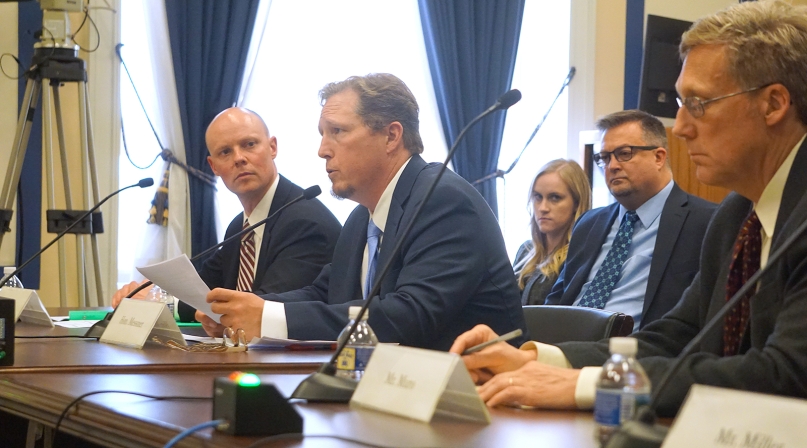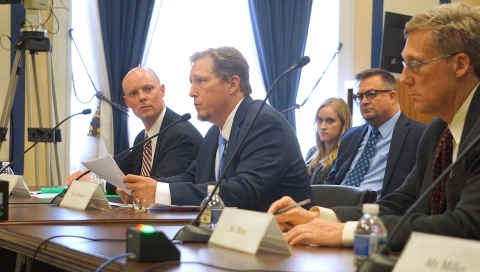Economic Development Administration on chopping block?
Author
Upcoming Events
Related News

Key Takeaways
As President Trump targets the Economic Development Administration (EDA) for elimination in his 2020 budget proposal, counties are touting the Commerce Department agency as a boost to local economies.
“I have seen firsthand the difference EDA can make in mitigating the economic downturn and in supporting efforts to create a stable and diversified economy in Gunnison County,” said Gunnison County, Colo. Commissioner John Messner. He discussed the EDA’s role in economic development and recovery April 9 before the U.S. House Transportation and Infrastructure Subcommittee on Economic Development. Messner, who serves on NACo’s Environment, Energy and Land Use Policy Steering Committee, testified on behalf of NACo.
Created in 1965, the EDA helps with many areas of economic growth including infrastructure investment, business development, loans and financing, innovation strategies, economic recovery, job creation and job growth.
With a $300 million annual budget, the EDA helped create and retain more than 275,000 private sector jobs and attracted more than $39 billion in private investment in the last six years, according to Rep. Dina Titus (D-Nev.), who chairs the Subcommittee on Economic Development.
Gunnison County and neighboring Delta County long relied on the coal mining industry and have faced negative economic impacts from coal mine closures, resulting from competition with natural gas production. Of four operating coal mines in the area, three shut down, leaving one that still operates. More than 1,700 jobs were lost.
Declining tax revenues following mine closures changed the county’s economic development strategy. The county has struggled to diversify the economy and provide alternative job opportunities.
“EDA’s engagement, financing and support have been integral to our economic revitalization following the coal mining industry downturn,” he said.
The EDA's $650,000 grant allowed the county to create an innovation center, “The ICELab,” which stands for the “innovation, creativity, entrepreneurship” lab at Western Colorado University. Titus added that the EDA should look into additional ways to bolster university partnerships for economic development opportunities.
The ICELab gives local businesses and entrepreneurs a space to collaborate, compete for funding and have access to a work space. The lab has generated entrepreneurial success stories, such as the development of hardware equipment for the fire-fighting industry and the development of an invention that automates irrigation water pipelines on farms.
“These businesses have created new jobs, diversified our economy and filled a much-needed gap,” Messner said. The ICELab leveraged other state and local funding opportunities for the county, encouraging entrepreneurs to stay in the area.
“Without assistance provided by EDA, we would still be facing intense economic difficulties,” Messner said during his testimony.

Attachments
Related News

Counties and Railroads: Shared Priorities for the Next Surface Transportation Bill
County leaders from across the country have a vital opportunity to ensure their infrastructure priorities are front and center.

House reintroduces bipartisan legislation to level playing field for rural communities
House reintroduced the Rural Partnership and Prosperity Act, bipartisan legislation intended to advance economic development in rural counties and overcome barriers to obtaining federal funding and resources.

Podcast: Eastern Tennessee counties invest in tourism during shutdown
Sevier County, Tenn. refused to let the government shutdown devastate its fall tourism draw—Great Smoky Mountains National Park. County Mayor Larry Waters describes the lengths he and his neighbors went to keep the park open. And NACo Chief Government Affairs Officer Mark Ritacco offers an outlook on what counties can take away from the shutdown and into the future.
